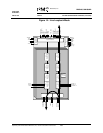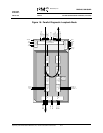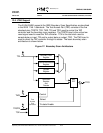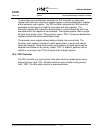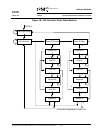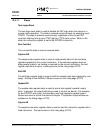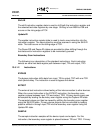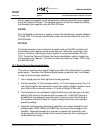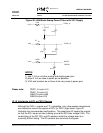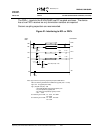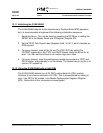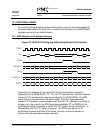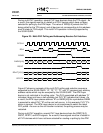
S/UNI-QUAD
PMC-Sierra, Inc.
PM5349 S/UNI-QUAD
DATASHEET
PMC-971239 ISSUE 6 SATURN USER NETWORK INTERFACE (155-QUAD)
Proprietary and Confidential to PMC-Sierra, Inc., and for its Customers’ Internal Use
217
device inputs and outputs can be sampled by loading the boundary scan register
using the Capture-DR state. The sampled values can then be viewed by shifting
the boundary scan register using the Shift-DR state.
IDCODE
The identification instruction is used to connect the identification register between
TDI and TDO. The device's identification code can then be shifted out using the
Shift-DR state.
STCTEST
The single transport chain instruction is used to test out the TAP controller and
the boundary scan register during production test. When this instruction is the
current instruction, the boundary scan register is connected between TDI and
TDO. During the Capture-DR state, the device identification code is loaded into
the boundary scan register. The code can then be shifted out output, TDO using
the Shift-DR state.
13.7
Board Design Recommendations
The noise environment and signal integrity are often the limiting factors in system
performance. Therefore, the following board design guidelines must be followed
in order to ensure proper operation:
1.
Use a single plane for both digital and analog grounds.
2.
Provide separate +3.3 volt analog transmit, +3.3 volt analog receive, and +3.3
volt digital supplies, but otherwise connect the supply voltages together at one
point close to the connector where +3.3 volts is brought to the card.
3.
Ferrite beads are not advisable in digital switching circuits because inductive
spiking (di/dt noise) is introduced into the power rail. Simple RC filtering is
probably the best approach provided care is taken to ensure the IR drop in
the resistance does not lower the supply voltage below the recommended
operating voltage.
4.
Separate high-frequency decoupling capacitors are recommended for each
analog power (TAVD, RAVD and QAVD) pin as close to the package pin as
possible. Separate decoupling is required to prevent the transmitter from
coupling noise into the receiver and to prevent transients from coupling into
some reference circuitry.



